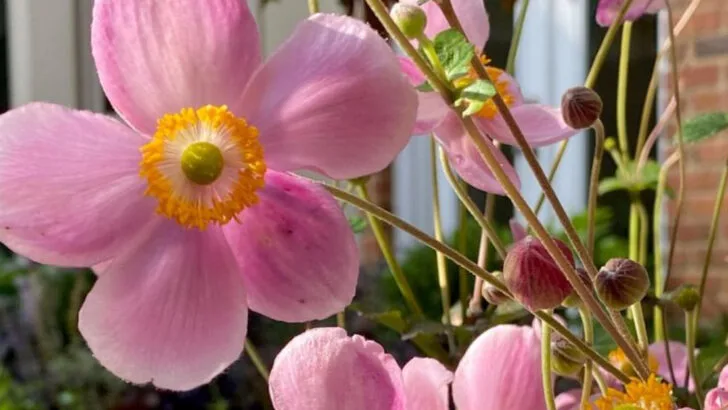Not every garden gets full sun—and that’s not a bad thing. In fact, shaded corners and low-light spots can become some of the most lush and colorful parts of your garden, if you know which plants to grow. Shade doesn’t have to mean fewer blooms—it just calls for the right flowers.
In this guide, we’re sharing 20 stunning shade-loving flowers that don’t just survive in the shadows—they thrive there. From vibrant impatiens and long-blooming begonias to delicate fuchsias and bold coleus varieties, these picks are anything but boring. Even better? They’ll keep blooming for months with minimal effort, adding color and life from spring to fall.
At Plantisima, we know our readers love discovering unexpected gardening wins. Whether you’re planting under trees, beside a north-facing wall, or on a balcony that never sees direct light, these flowers will bring long-lasting beauty right where you need it most.
Astilbe
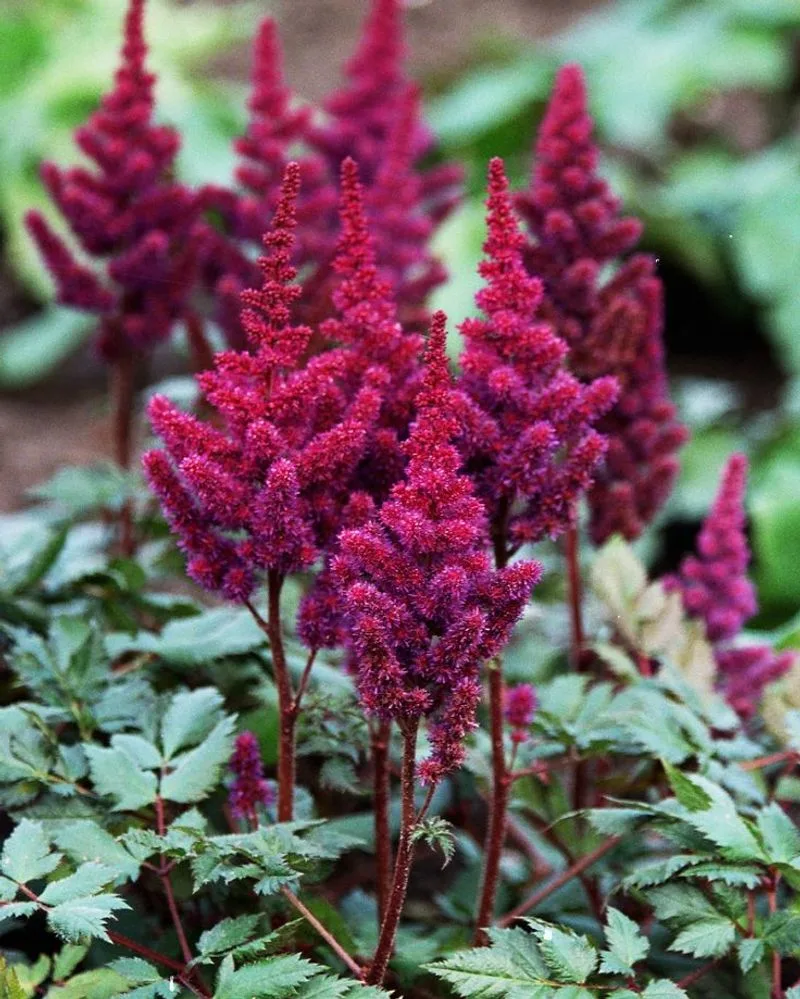
Astilbe’s feathery plumes bring a touch of elegance to shaded gardens. These perennials are known for their vibrant hues, ranging from deep reds to soft pinks. Often found lining garden paths, their feathery texture adds movement and grace.
Astilbe thrives in rich, moist soil, making them perfect companions for ferns and hostas. Water them regularly to maintain their lush appearance.
Did you know? Astilbe is often used in bridal bouquets for its romantic appeal. Their colorful blooms make them a favorite among gardeners seeking to brighten shaded areas.
Bleeding Heart
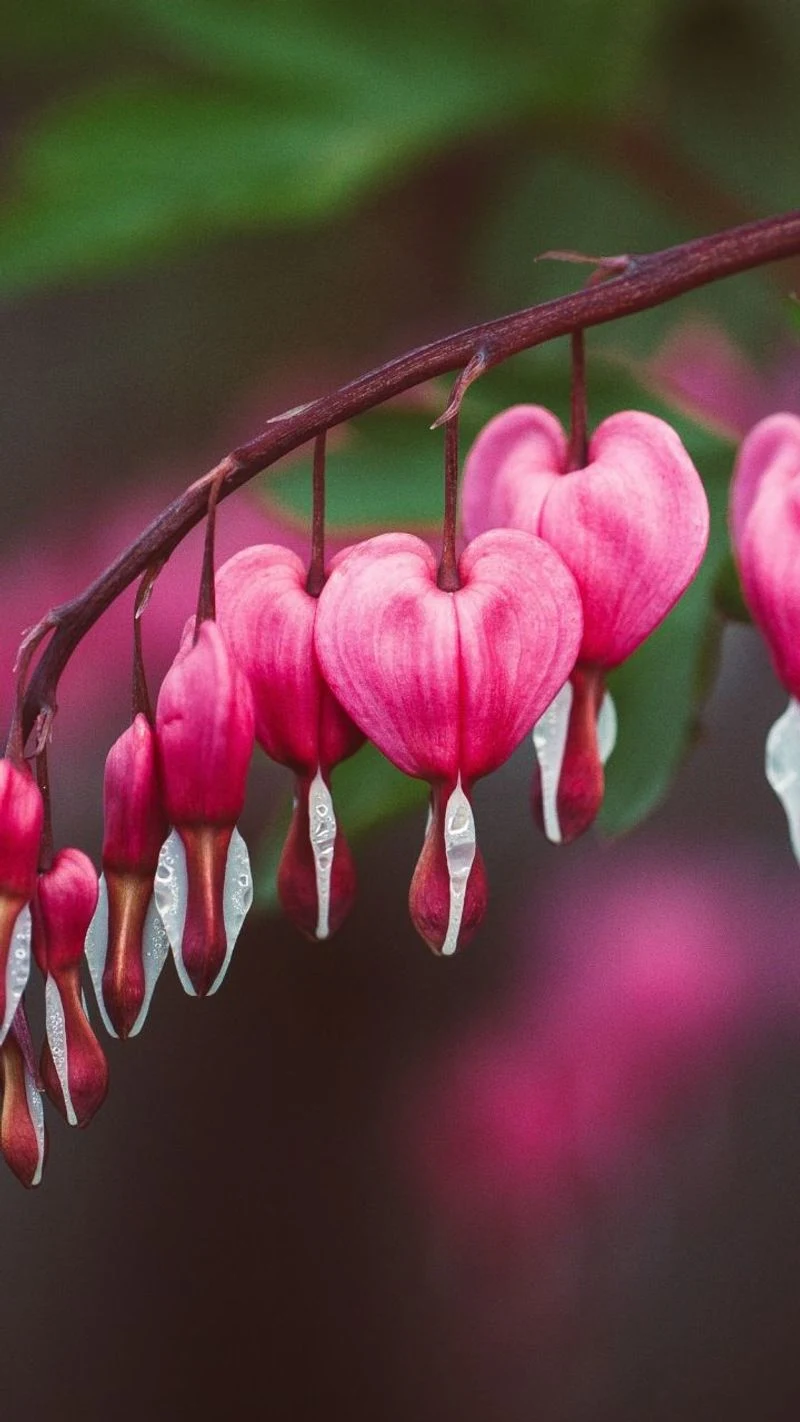
Bleeding Heart, with its heart-shaped blossoms, tells a story of love and resilience. These charming perennials bloom in early spring, bringing joy to any shaded garden. Their unique flowers dangle delicately from arching stems, creating a picturesque scene.
This plant prefers cool, moist environments and thrives when sheltered from the midday sun. Ideal for woodland gardens, it pairs beautifully with ferns and hostas.
Trivia: In Victorian times, the Bleeding Heart was a symbol of undying love and devotion. Its captivating blooms continue to enchant gardeners and visitors alike.
Hosta
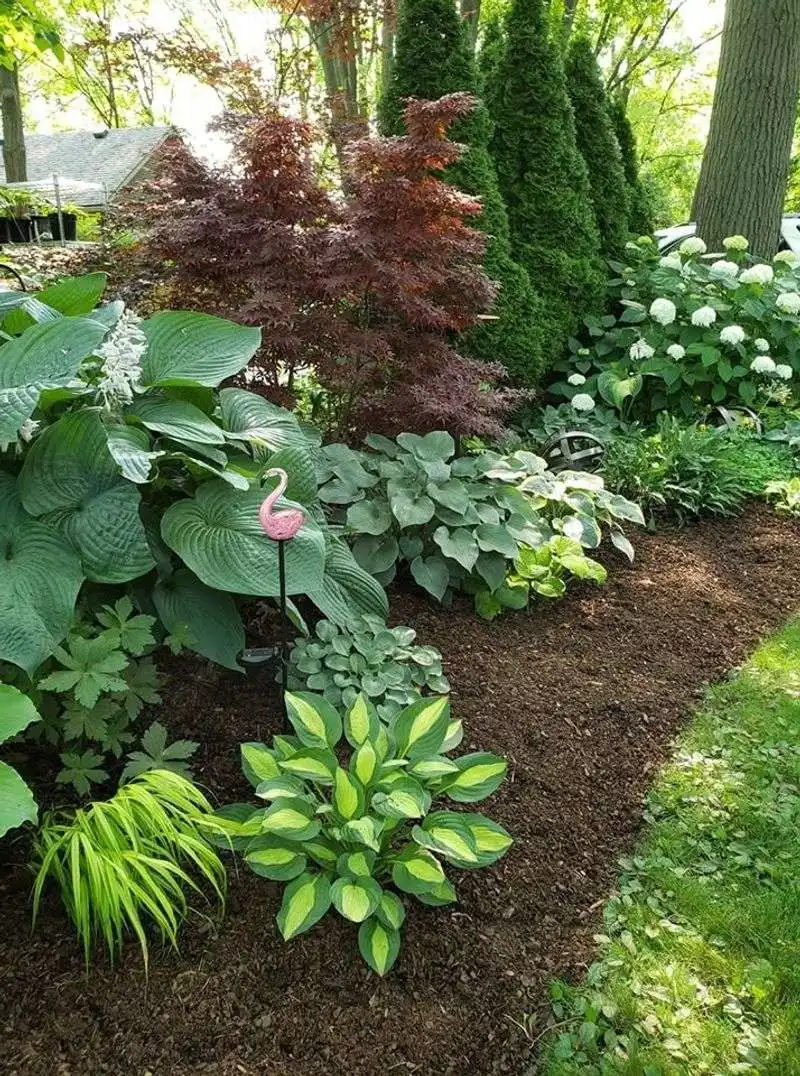
With their lush, expansive foliage, Hostas are a staple in any shade garden. These perennials are valued for their diverse leaf shapes and colors, ranging from deep blue-greens to vibrant yellows. Hostas are not just about leaves; their summer blooms attract hummingbirds and add a touch of elegance.
They thrive in moist, well-drained soil and require minimal care. Perfect for borders or as a ground cover, Hostas create a serene backdrop for more colorful plants.
Fun fact: Hostas are native to Northeast Asia and have been cultivated for centuries, admired for their versatility and beauty.
Lungwort
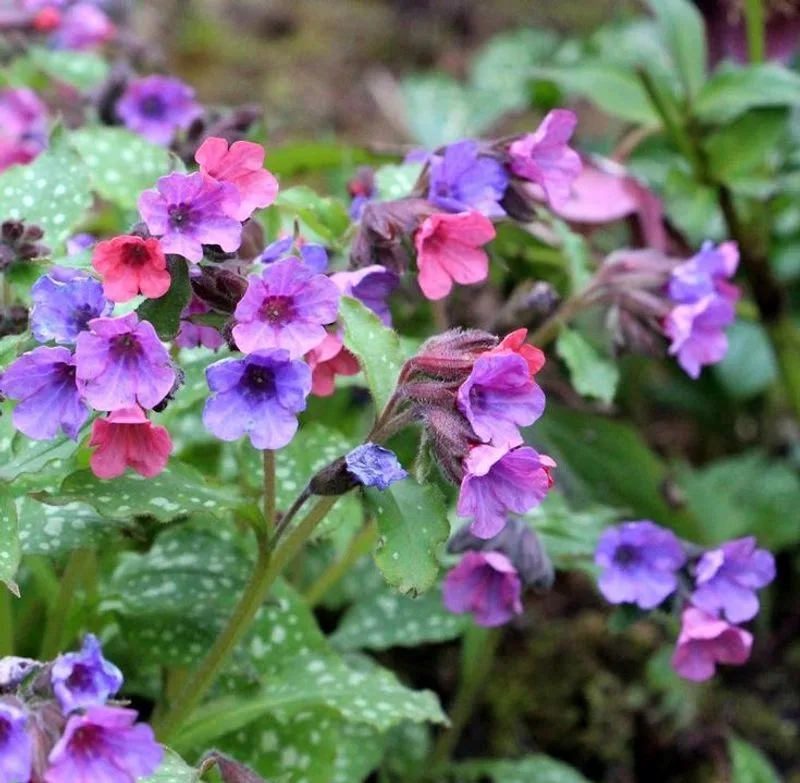
Lungwort’s speckled leaves and pastel blooms offer a whimsical touch to shaded spaces. Known for its resilience, this perennial thrives in cool, damp environments, making it ideal for woodland gardens.
Its flowers transition from pink to blue, creating a captivating display throughout the season. The foliage remains attractive even after the blooms fade, adding texture and interest.
Historically, Lungwort was used in herbal medicine. Despite its unusual name, this plant is a favorite among gardeners for its unique appearance and low maintenance needs.
Fuchsia
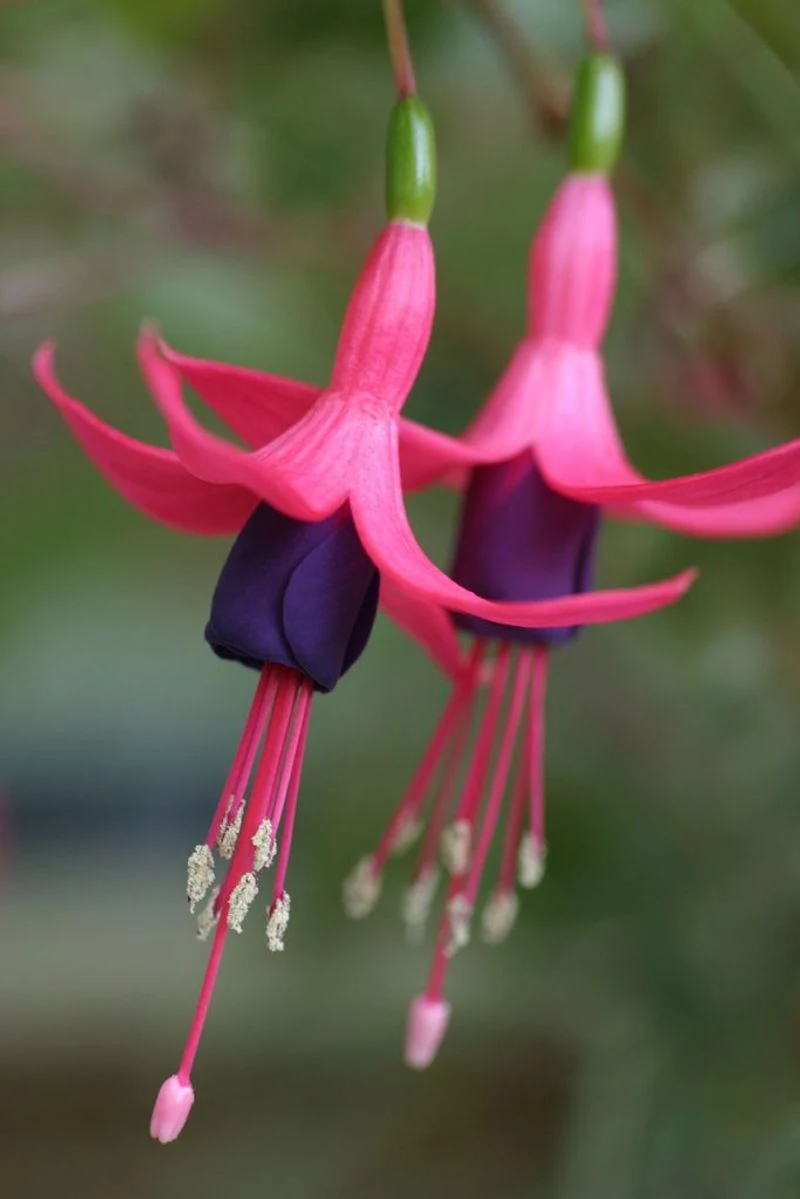
Fuchsia is known for its vibrant, pendulous blossoms that brighten shaded patios and gardens. These tender perennials are perfect for hanging baskets or container gardening, offering a burst of color in sheltered areas.
Regular watering and well-drained soil are essential to maintain their lively appearance. Fuchsias prefer cooler temperatures, making them ideal for shaded spots during hot summer months.
Did you know? Fuchsia was named after the German botanist Leonhart Fuchs. Its striking blooms have made it a beloved choice for gardeners looking to add a dramatic flair to shaded spaces.
Toad Lily
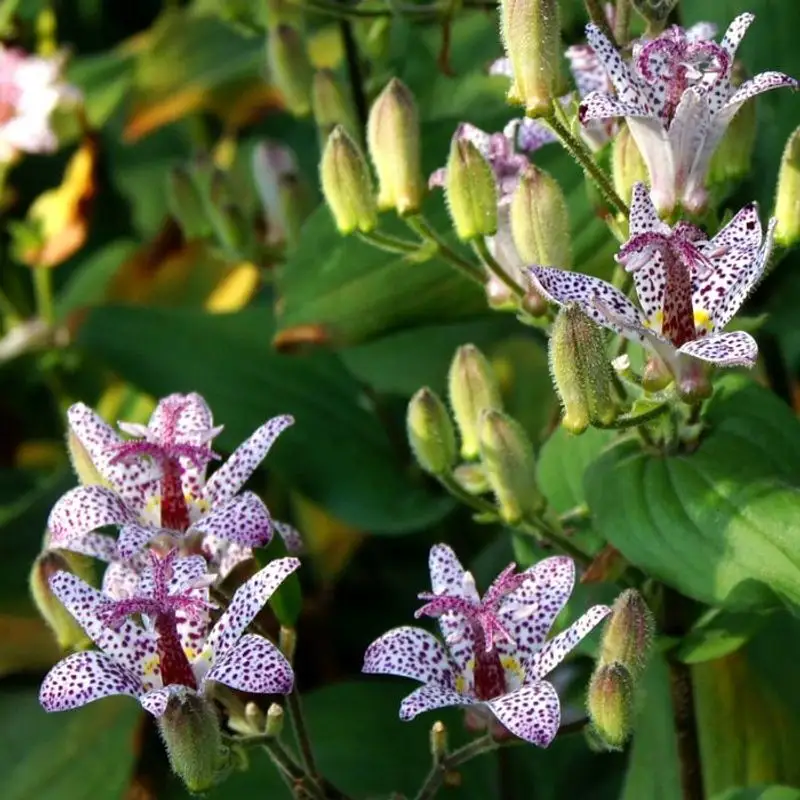
Toad Lily’s exotic appearance captures the imagination with its orchid-like blossoms. These autumn bloomers are perfect for adding late-season interest to shaded gardens. Their spotted petals and unique shape stand out, offering a touch of the exotic.
They thrive in well-drained, fertile soil and appreciate consistent moisture. Toad Lilies are excellent choices for woodland gardens and shaded borders.
Fun fact: Despite their delicate appearance, Toad Lilies are hardy and can tolerate cool climates. Their intriguing flowers make them a conversation starter in any garden setting.
Japanese Anemone
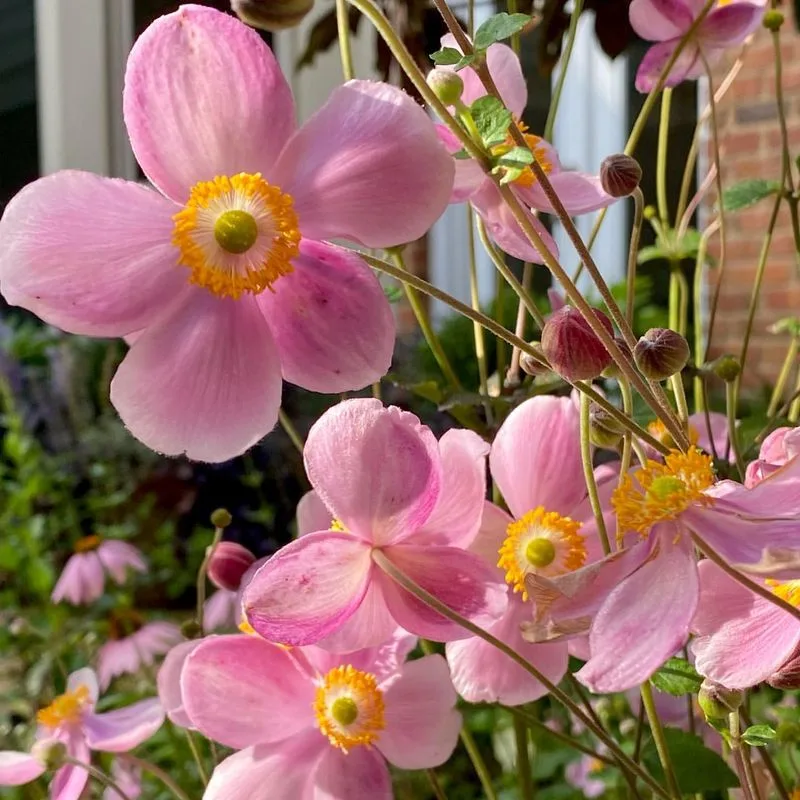
The grace of Japanese Anemones lies in their tall, swaying stems topped with delicate blooms. These autumn beauties flower in late summer and continue into fall, adding elegance to shaded gardens.
Their preference for well-drained, humus-rich soil allows them to thrive in partially shaded areas. Their long-lasting flowers make an excellent choice for garden borders and cutting gardens.
Trivia: Japanese Anemones are sometimes called “windflowers” due to their ability to dance gracefully in the breeze. Their timeless elegance has made them popular in both traditional and modern garden designs.
Coral Bells
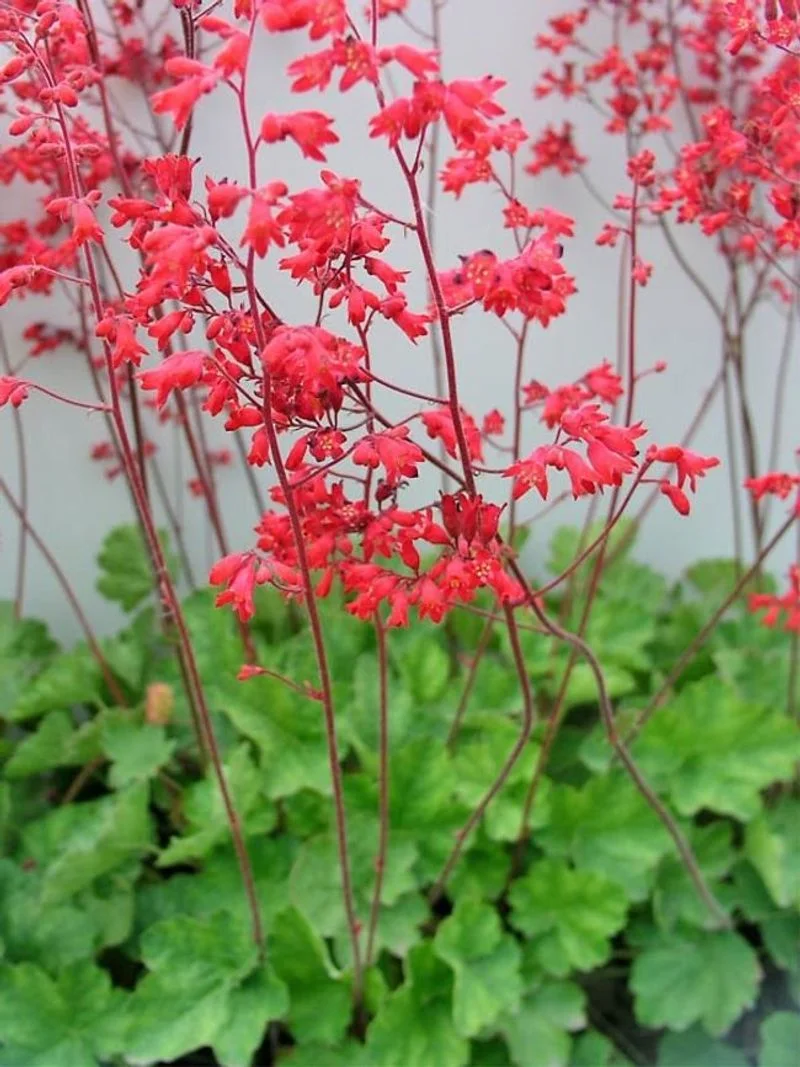
Coral Bells are celebrated for their colorful foliage and delicate bell-shaped blooms. The leaves present an array of colors, from silver to deep burgundy, providing year-round interest.
These perennials thrive in well-drained, slightly acidic soil and appreciate some morning sun. Perfect for borders, container gardens, or ground covers, they offer versatility in design.
Did you know? Coral Bells are also known as Heucheras, named after the German botanist Johann Heinrich von Heucher. Their ability to thrive in varied conditions makes them a must-have for any shade garden.
Foamflower
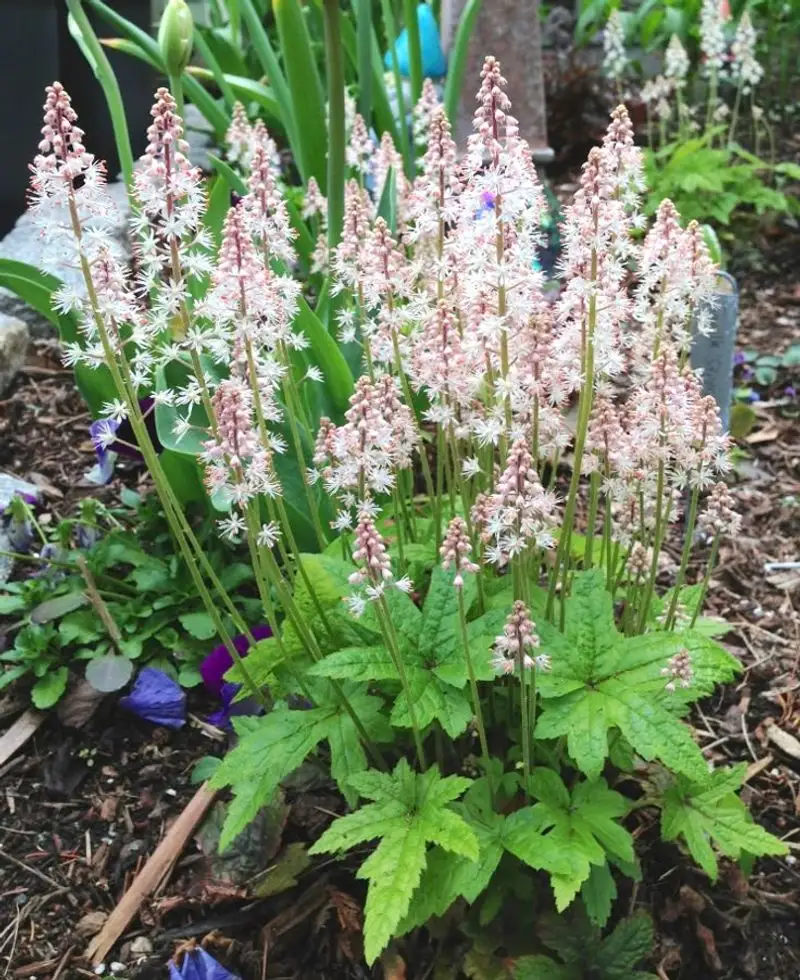
Foamflower’s frothy blooms create a cloud-like effect in shaded gardens. This perennial is cherished for its delicate white flowers that appear in spring, lasting well into summer.
It thrives in moist, well-drained soil, making it ideal for woodland settings. The heart-shaped leaves provide additional interest, often turning red in the fall.
Fun fact: Foamflowers are related to Coral Bells and share similar growing conditions. Their ability to form dense mats makes them excellent ground covers for shaded areas, adding both texture and charm.
Brunnera
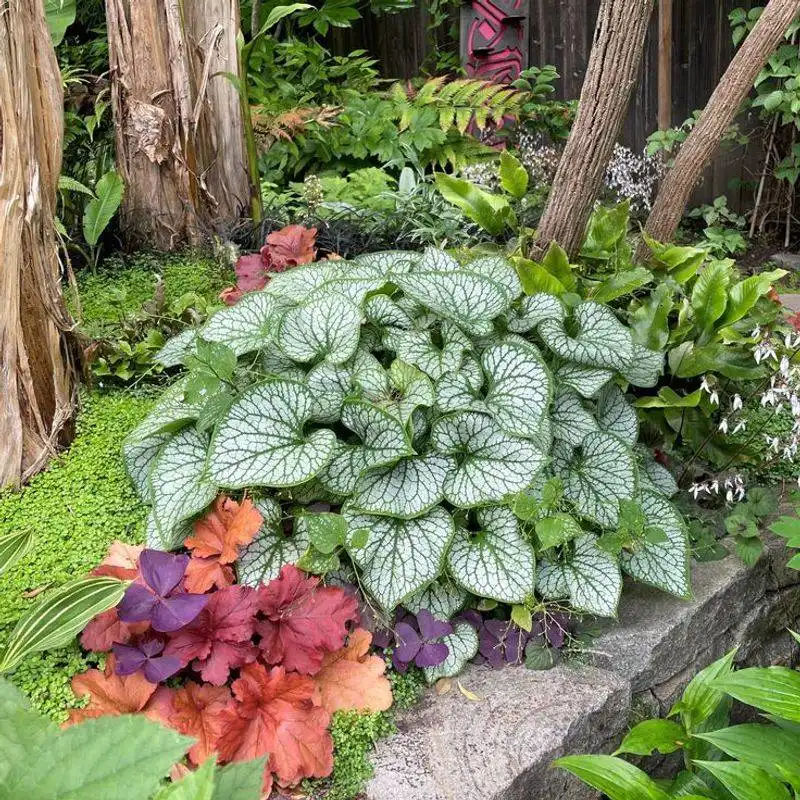
Brunnera’s heart-shaped leaves and dainty blue flowers evoke a sense of tranquility in shaded spots. Often referred to as “false forget-me-nots,” these perennials bloom in early spring and continue to offer beauty throughout the growing season.
They prefer rich, moist soil and thrive in partial to full shade. Brunneras are perfect for borders, woodland gardens, or as ground covers.
Did you know? The name “Brunnera” honors the Swiss botanist Samuel Brunner. Their charming flowers and robust foliage make them favorites among gardeners seeking reliable shade options.
Lenten Rose
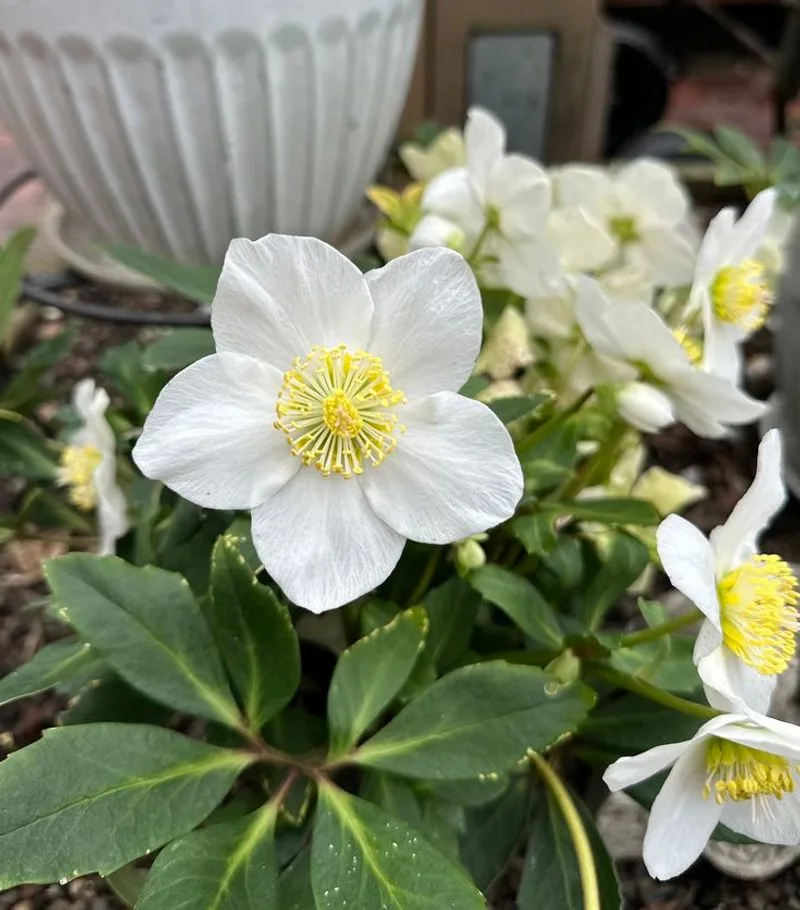
Lenten Rose, or Helleborus, boasts enchanting blooms that appear in late winter to early spring. Their cup-shaped flowers range in color from soft pinks to deep purples, adding intrigue to shaded gardens.
These perennials thrive in well-drained soil and enjoy a sheltered position away from harsh winds. Their evergreen foliage provides year-round interest, even when the flowers have faded.
Fun fact: Despite their name, Lenten Roses are not true roses. Their ability to bloom in the coldest months has made them a symbol of endurance and hope in the garden world.
Solomon’s Seal
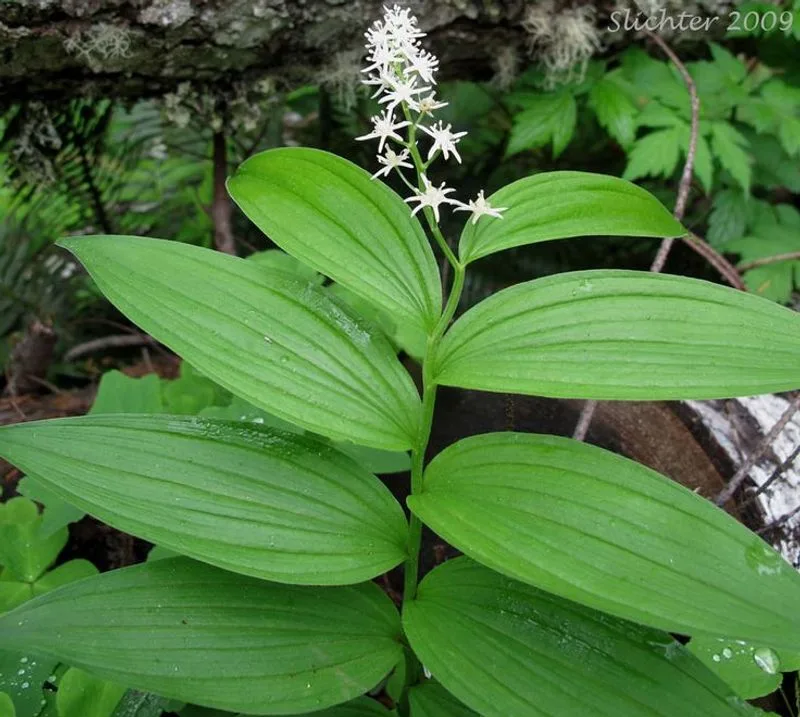
Solomon’s Seal captivates with its graceful arching stems adorned with dangling white flowers. This perennial thrives in shaded woodland gardens, where its elegance can be fully appreciated.
Preferring moist, well-drained soil, Solomon’s Seal is a low-maintenance choice that offers both aesthetic appeal and structure. Its foliage turns a golden yellow in the fall, providing seasonal interest.
Did you know? The name “Solomon’s Seal” is thought to originate from the circular scars on the rhizomes, resembling ancient seals. Their hardy nature makes them a reliable choice for shade gardens.
Foxglove
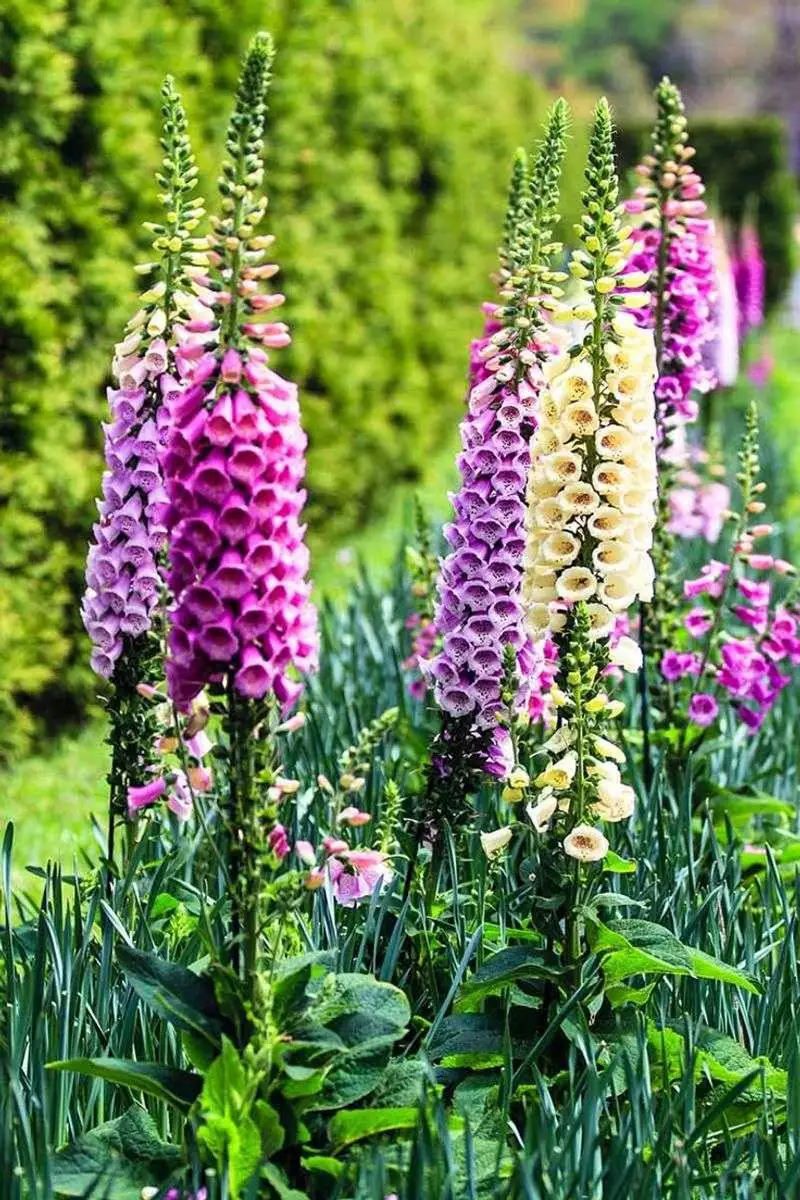
Foxglove’s towering spires of tubular flowers bring dramatic height to shaded borders. These biennials are known for their vibrant pink and purple blooms that attract pollinators like bees and hummingbirds.
They thrive in well-drained soil and prefer partial shade, making them ideal for woodland gardens. With proper care, Foxgloves can self-seed, ensuring their presence for years to come.
Trivia: The name “Foxglove” is derived from “folk’s glove,” referencing the belief that fairies wore the tubular flowers as gloves. Their enchanting appearance adds whimsy to any garden space.
Corydalis
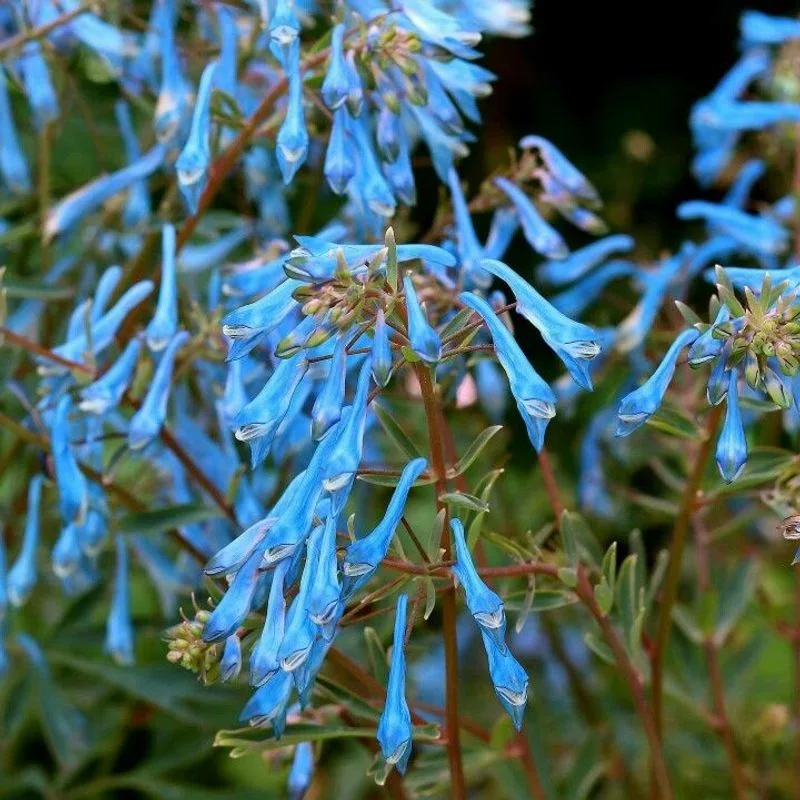
Corydalis enchants with its delicate foliage and cheerful yellow blooms, brightening even the shadiest corners. These perennials are known for their fern-like leaves, which add texture and interest.
Thriving in moist, well-drained soil, Corydalis is perfect for woodland gardens or shaded borders. Their sporadic blooming throughout the season ensures continuous color.
Did you know? Corydalis is part of the poppy family and is known for its resilience in challenging growing conditions. Their cheerful presence can uplift any shaded garden setting, making them a gardener’s delight.
Epimedium
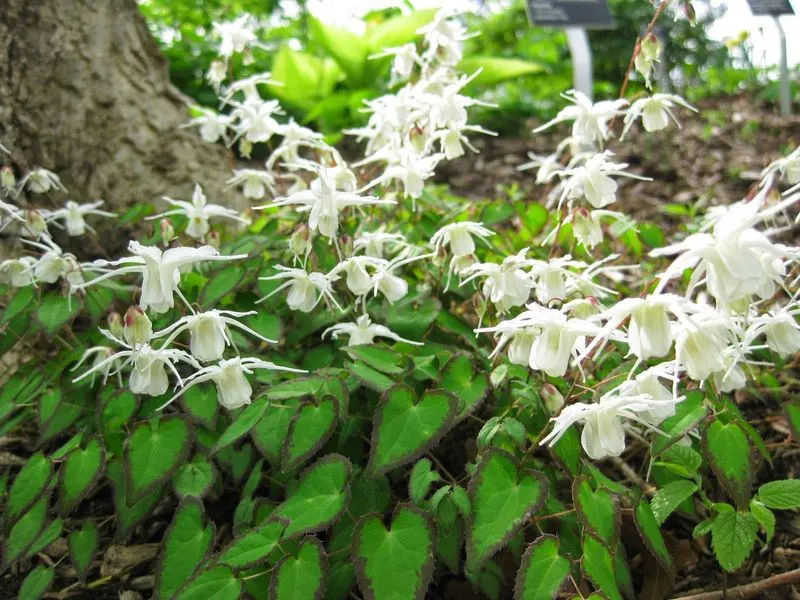
Epimedium, often called “Barrenwort,” adds a touch of whimsy with its heart-shaped leaves and dainty flowers. These perennials bloom in spring, offering a charming display in shaded gardens.
Preferring well-drained soil, Epimedium is ideal for ground cover or borders. Their foliage remains attractive year-round, providing additional interest.
Trivia: Epimedium is sometimes referred to as “bishop’s hat” due to the shape of its flowers. Known for its hardiness, this plant thrives in a variety of conditions, making it a versatile addition to any garden.
Virginia Bluebells

Virginia Bluebells are heralds of spring with their clusters of blue bell-shaped flowers. These perennials thrive in rich, moist soil and are perfect for woodland gardens.
Their blooms start pink and transition to blue, creating a visually captivating display. As ephemerals, their foliage dies back after blooming, making room for summer plants.
Fun fact: Virginia Bluebells were a favorite of Thomas Jefferson and can be found in historic gardens across the United States. Their fleeting beauty adds charm and nostalgia to any shaded garden setting.
Trillium
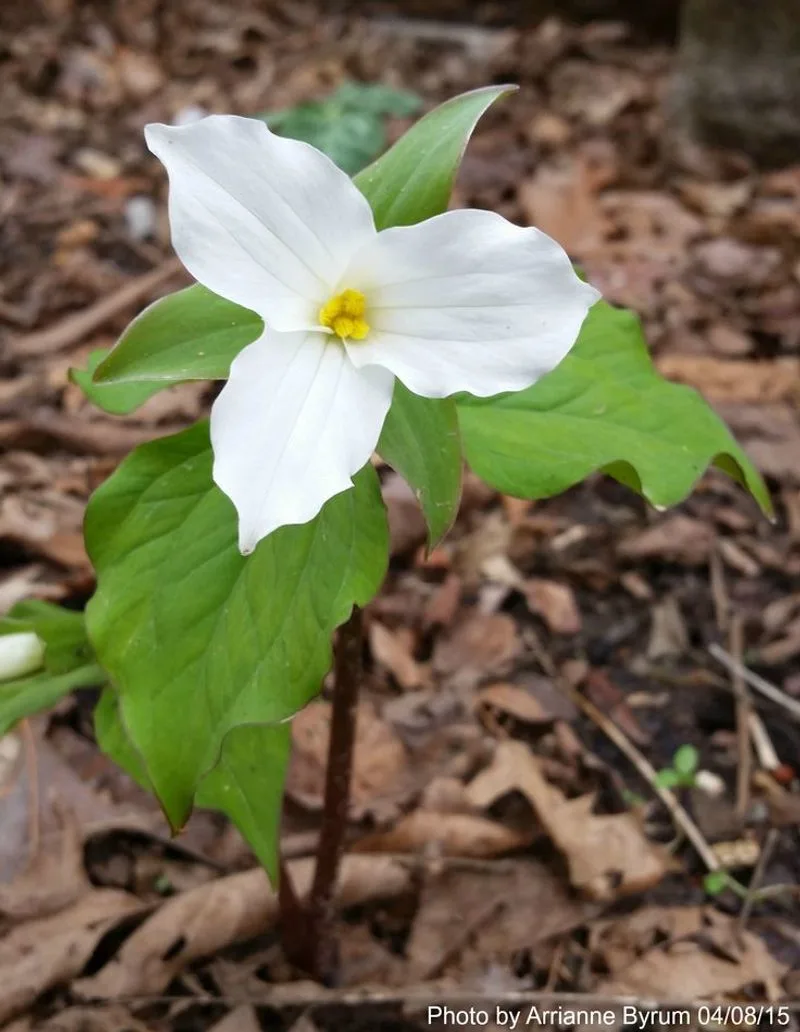
Trillium’s distinctive three-petaled blooms are a signature of woodland gardens. These perennials thrive in shady, well-drained environments and are often found carpeting forest floors.
Their unique structure makes them a favorite among wildflower enthusiasts. Trillium requires little maintenance, making them ideal for naturalized garden settings.
Trivia: Trillium is a symbol of Ontario, Canada, and is protected by law in some places. Their elegant simplicity and natural beauty make them a treasured addition to any shaded garden.
Bergenia
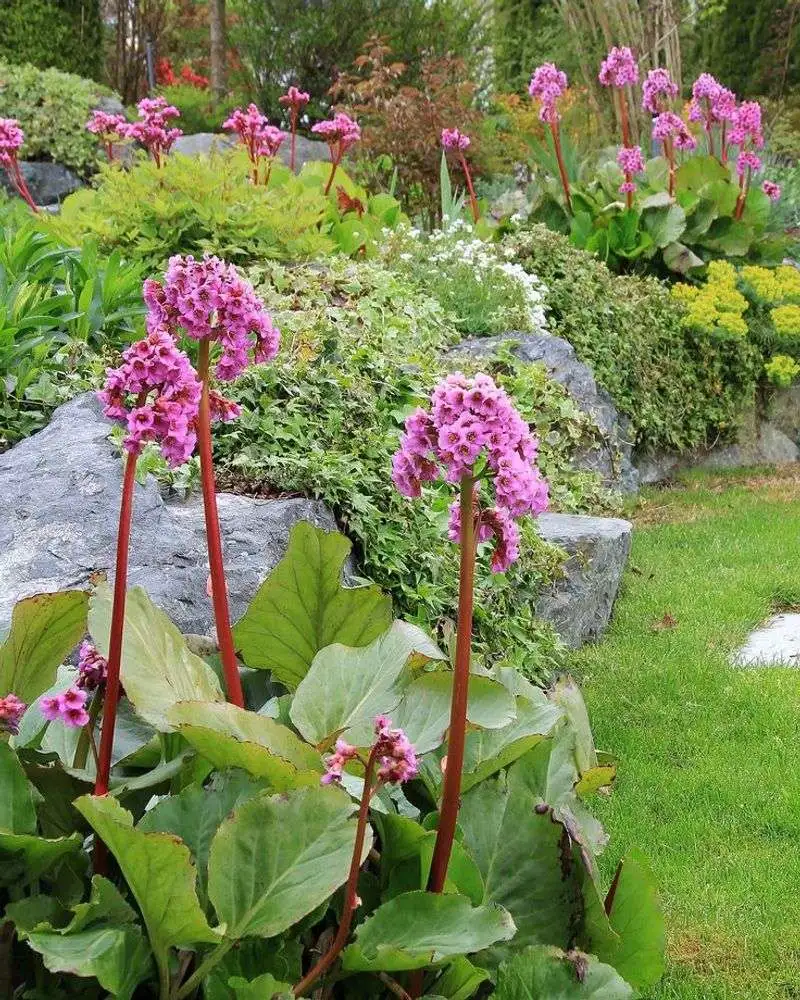
Bergenia’s robust foliage and charming pink flowers offer visual interest in shaded gardens. These perennials are known for their large, leathery leaves that turn bronze in the fall.
Ideal for ground cover or rock gardens, Bergenias thrive in well-drained soil and partial shade. Their hardiness makes them a reliable choice for year-round appeal.
Did you know? Bergenia is sometimes called “Pig Squeak” due to the sound their leaves make when rubbed. Their unique foliage and vibrant blooms make them a standout in any garden.
Himalayan Blue Poppy
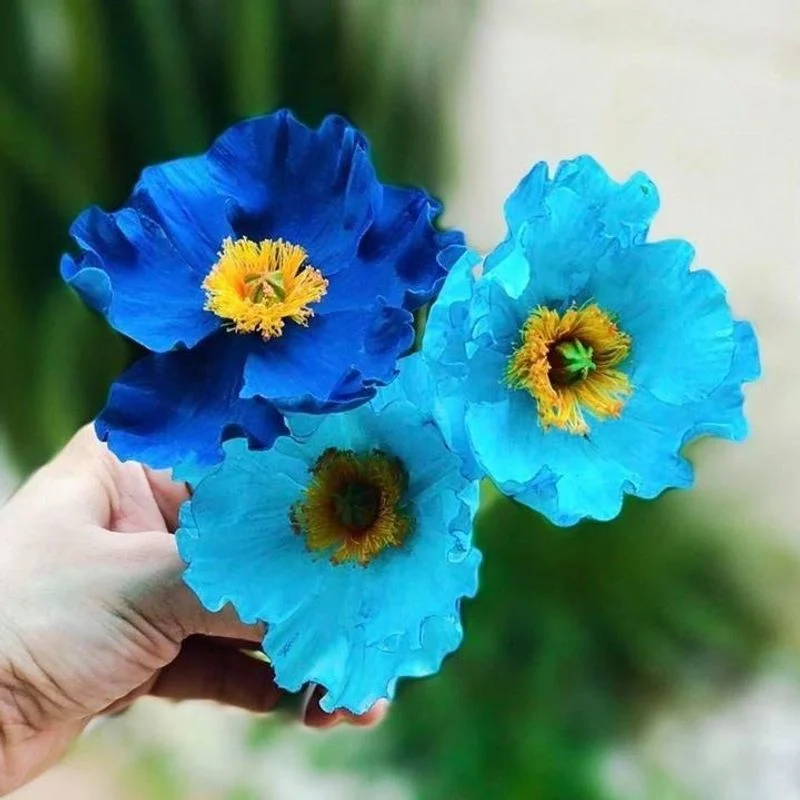
Himalayan Blue Poppy’s ethereal blue blooms are a gardener’s dream. These perennials prefer cool, shaded environments and are often considered challenging to grow.
They thrive in rich, moist soil with good drainage, making them ideal for dedicated gardeners willing to provide the necessary care. Their rare color adds a magical touch to any garden.
Fun fact: The Himalayan Blue Poppy is native to the Himalayas and symbolizes dreams and aspirations. Their stunning appearance and rarity make them a prized possession for those seeking unique garden treasures.
Lamium
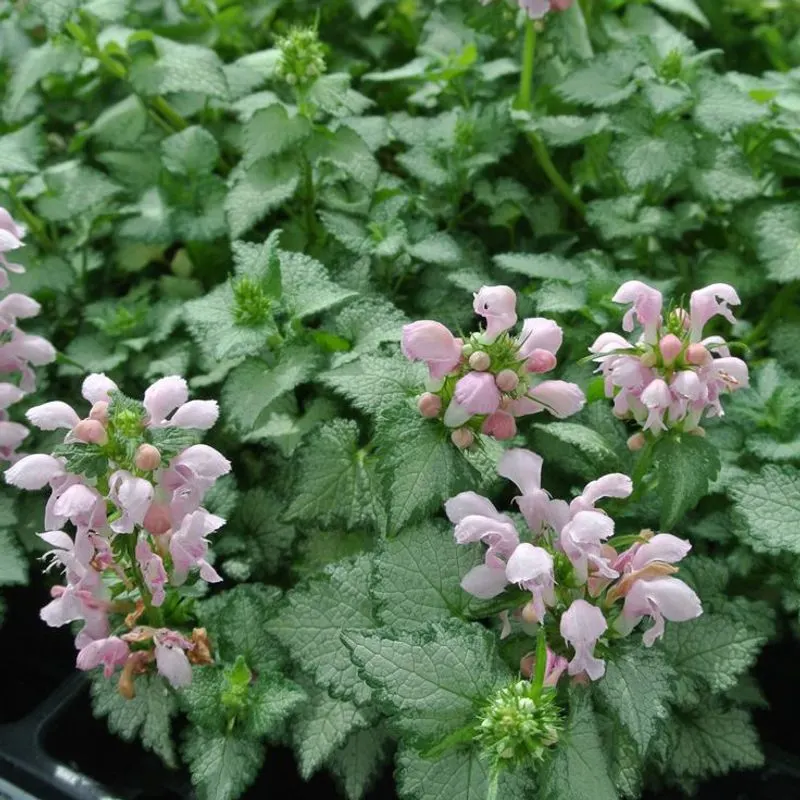
Lamium, often used as a ground cover, enchants with its variegated leaves and small purple blooms. These perennials are perfect for adding texture and color to shaded areas.
They thrive in well-drained soil and prefer partial shade, making them a versatile choice for challenging garden spots. Their foliage remains attractive all season long.
Did you know? Lamium is part of the mint family and is praised for its ability to thrive in difficult conditions. Their adaptability makes them a gardener’s ally in creating beautiful, low-maintenance landscapes.

